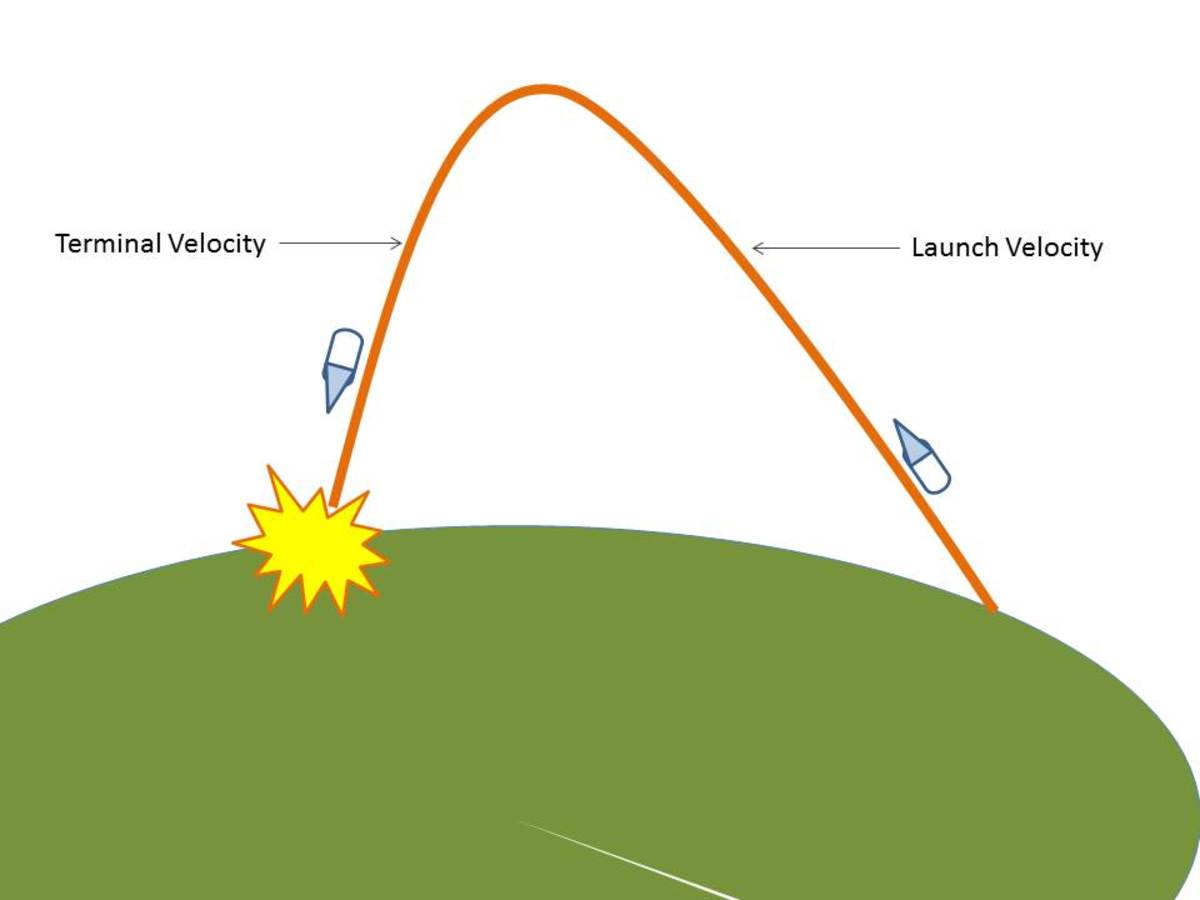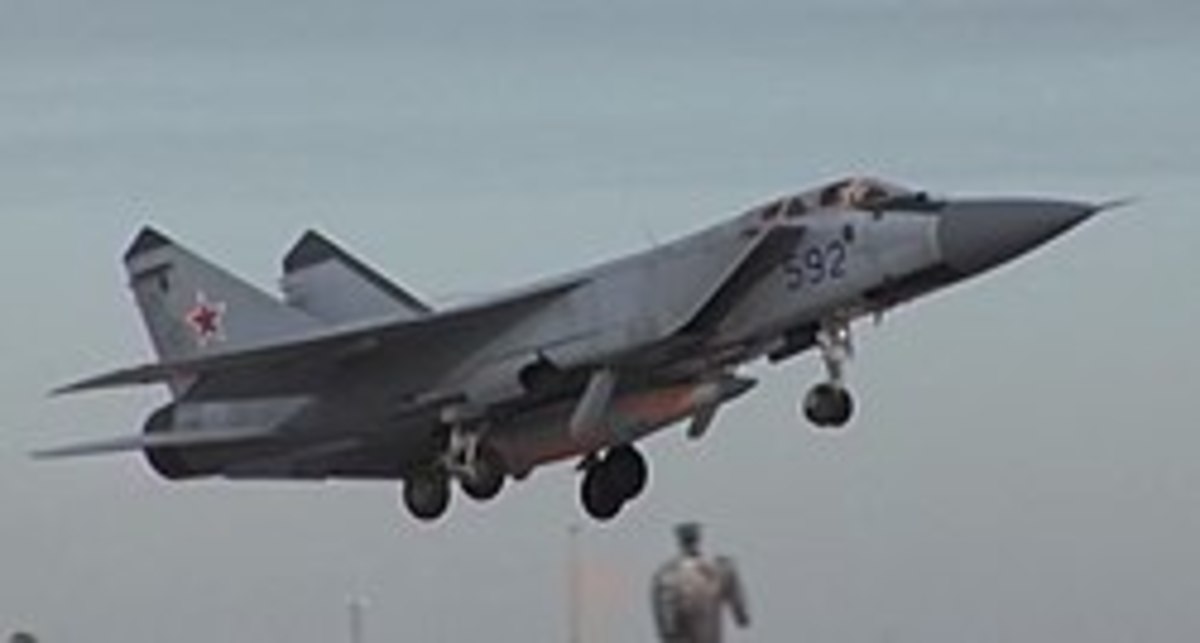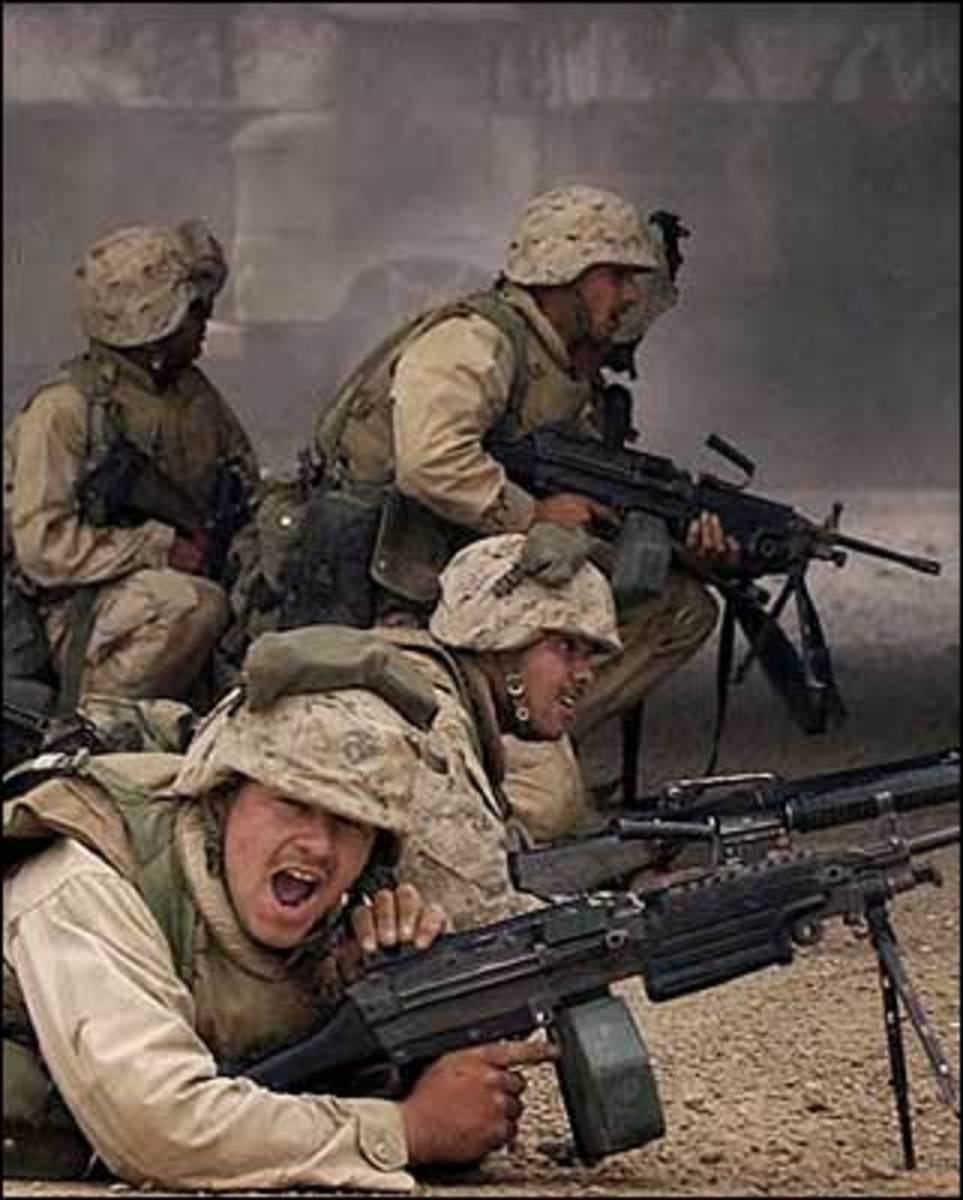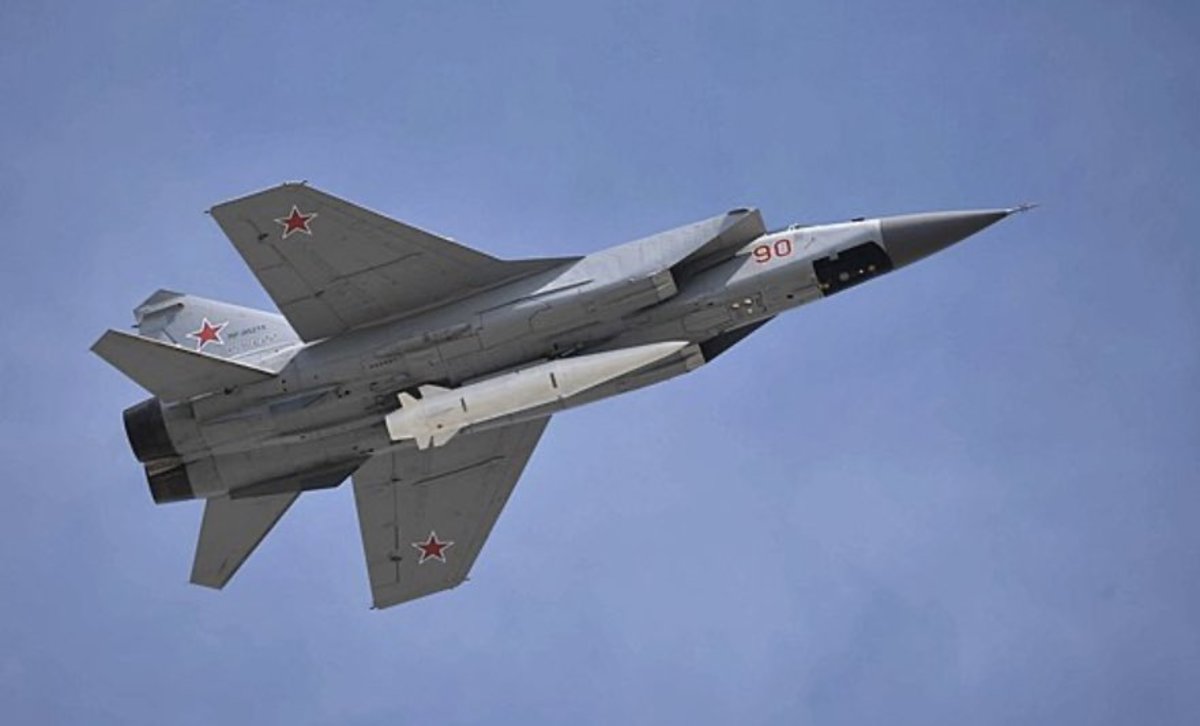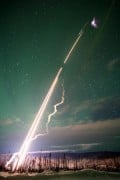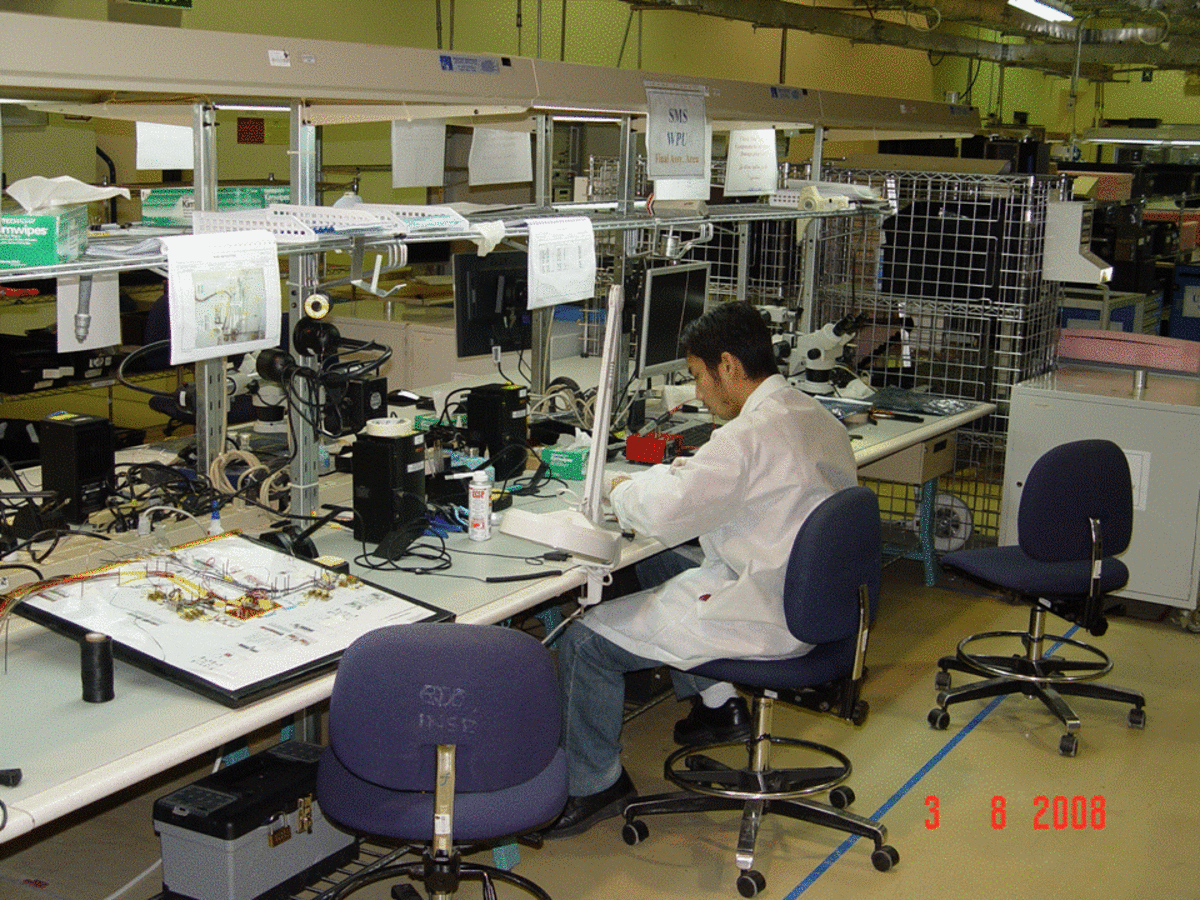The History of Saddam's WMD: Radiological & Missiles
Radiological
In February of 1996 Iraq handed over a report to the UN which described Iraq's attempts to develop a nuclear radiation bomb (dirty bomb). The attempt apparently took place in 1987 and described the design and other steps that Iraq had taken to develop the weapon. Although not an effective military weapon, dirty bombs are an excellent terrorist weapon which would incite panic and fear greater than any other conventional explosive device. The fear is that the Iraqi research could have aided or been passed on to al-Qaida or other terrorist organizations.
Iraq began by irradiating zirconium oxide in a nuclear research reactor, the radioactive material was then placed into a lead cylinder and then placed into a conventional high-explosive aerial bomb. The bomb was then dropped on a testing range exploding and dispersing radioactive zirconium oxide into the air, soil, and water, although the radioactive isotope was probably zirconium-95 which has a half life of only 64-80 days. The resulting radiation levels were then measured. The material used was a zirconium mixture with the highest percentage being zirconium as well as smaller amounts of hafnium, uranium and iron.
Zirconium is widely used in reactors since it resists corrosion and the availability of the radiated metal is the likely reason for its use and because according to the report the production process for the zirconium already existed and was used in incendiary devices. The document claimed that the work was conducted at the Al-Muthanna complex. The radioactive materials were produced at the Tuwaitha reactor. The bomb itself weighed over a ton and was 12 feet long.
Iraq had hoped to develop the weapon to use against military units, perhaps the human wave attacks they suffered at the hands of Iran, as well as to contaminate strategic locations such as airports, railroad stations, bridges, and other military and strategic installations. Since simply bombing a target will not guarantee destruction of the target beyond use and definitely does not prevent rebuilding a target so Iraq had hoped that by contaminating the area the enemy would be unable to use the site or rebuild there for some significant time afterwards.
The Iraqi's hoped the bomb would create a radioactive cloud which would cause vomiting, cancer, birth defects, and a slow death. The report stated “weaken enemy units from the standpoint of health and inflict losses that would be difficult to explain, possibly producing a psychological effect”, adding that death would occur “within two to six weeks”.
Iraq found though that the weapons could not achieve significant radiation levels to be a practical military weapon. Also since the radioactive charges were short-lived the shelf life of the munitions would be short and any weapon would have to be produced and used within several weeks. The weapon had also produced only low levels of radiation, lower in fact than those allowed by workers who work in radioactive industries. There was no potential of short or long term health effects. To those exposed to the radiation from the weapon. The weapon was clearly a failure and after three field tests in 1987 the project was abandoned.i
Oddly though the report appeared to have been prepared by personnel not competent in this type of work, especially since Iraq had plenty of brilliant nuclear scientists and technical experts on its payroll. Also the methods to determine radiation levels was incorrect, something a knowledgeable person in the field would recognize. There were also many conflicting statements made throughout the report. The report appears to have been made by inexperienced personnel without significant knowledge in the field. When UN inspectors visited the site in the early 90's there was no or extremely low amounts of radiation.ii
In my opinion there are only two reasons to account for the lack of knowledgeable personnel on the project and other conflicting and unusual claims. Either the project received little funding or personnel since other projects such as the chemical and nuclear weapons programs appeared to have been top priorities and the dirty bomb project was left to inexperienced or other personnel lacking technical expertise. Or; the report was a fake, a diversion from either a more sophisticated and successful radiological program or another illicit program.
iBroad, William J., Document Reveals 1987 Bomb Test by Iraq, The New York Times, April 29, 2001, p. A8.
iiMilhollin, Gary, Comments on the “AL-Q'AQ'A Bomb”, May 17, 2001.
Two Soviet built, Iraqi-modified Al-Hussein missiles
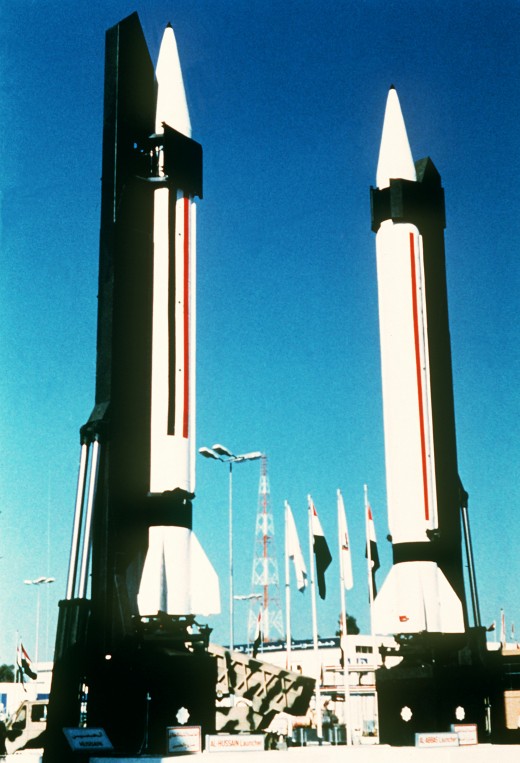
Missile Program
Iraq's main missile was the short-range mobile scud ballistic missile which was developed by the Soviet Union in the 1950's. The design was drawn from the technology of Germany's V-2 rockets developed during World War II. This missile design was the major component of the Soviet and Warsaw Pact nations while also being widely exported to other countries including Iraq, Iran, Libya, and North Korea.
Iraq's missile program began in the early 70's when Iraq signed agreements with the Soviet Union in 1974 to acquire 819 Scud-B missiles and 11 mobile launchers. The Soviets continued to supply scud missiles and conventional warheads to Iraq throughout the 70's and 80's. The 300km range of the scud-B missiles limited their usage and prompted Iraq to modify the missiles to extend their range. When the war started with Iran in 1980 Iraq had to develop missiles with the necessary range to strike Tehran which was around twice the range, of the scud-B, from the border of Iraq.
The Iraqis made an extensive effort to reverse engineer and modify Soviet made scud missiles. Almost all of Iraq's missiles were variants of the soviet designed scud-B missile including the Al Hussein, the Al Abbas, and the Al Hijarah missiles, all of which used liquid fuel propulsion systems. Often though these modifications caused problems to in flight stability, occasionally the Al-Hussein missile would break apart upon atmospheric re-entryi.
In 1985 Iraq started the BADR-2000 program, Argentina referred to the program as the Condor II. This was a cooperative effort between Egypt and Argentina to develop a two stage solid-fuel missile with a range of up to 1000km. To support this program General Kamil used a network of clandestine suppliers to support the BADR-2000 program, also a consortium consisting of 16 European companies was formed to give technical support to the program. The consortium was called Consen and was based in Switzerland with the largest amount of assistance coming from German firms. The program had cost Iraq $400 million by 1989 including the cost to build production plants in Iraq to produce the solid rocket motors and to construct test stands. The system was to be the bases for the development of later missiles of ranges up to 1500km.
The condor missile, which relied heavily on West German and Italian engineers and technicians, lost support in the late 80's and funding is believed to have ceased in 1988. The Condor missile was a back-up plan for development of a loner range ballistic missile, once Iraq was able to indigenously produce long range missiles, Iraqi officials chose to devote the energies towards the indigenous missiles rather than rely on foreign assistance.
The first time Iraq was able to strike Tehran with a missile was on February 29th, 1988. Over the next seven weeks consisted of a missile barrage between Iran and Iraq and became known as the “War of the Cities” where 189 missiles were fired. The missile Iraq used to break the range barrier between the Iraqi border and Tehran was an upgraded version of the Scud-B, also known as the Al-Husayn. The Iraqi missiles were only partially accurate although during the seven week missile exchange between Baghdad and Tehran in 1988 Iraqi missiles killed 2,000 Iranians and injured 6,000 more. The missile barrage caused over two million people to flee Tehran in fear. During the Iran-Iraq war Iraq probably fired over 520 scud-B and Al-Hussein missiles.
Iraq operated several missile programs, their most prominent and productive being the Scud program, whose offspring was the Al-Hussein missile. Iraq had been purchasing the Soviet designed Scud missiles from the USSR for years and Iraqi engineers had been upgrading and reverse engineering these missiles for years as well, so the Iraqi familiarity with these missile systems was high.
Another missile project, named Project 395, was intended to develop the production and testing facilities to produce solid-fueled ballistic missiles, using most of the same resources associated with the Condor program. Iraq spent an estimated $400 million to build the facilities and in 1989 Iraq received a chemical manufacturing plant used to produce the solid-fuel rocket motors. Iraq, by this time, also had an operational missile components and assembly factories as well as a test stand. The aim of the program was likely the production of the Fahd missile with an initial range of 250km and another version with a range of 500km. The Fahd was probably intended to replace the Al-Hussein missile as an indigenous missile rather than using a modified Soviet missile for their military needs.ii
The Iraqi missile effort was a large program to develop a long-range ballistic missile capability. The program aimed to create solid-fuel missiles with longer-ranges and larger payloads. Although the missile forces still relied heavily on Scud variant missiles until the Iraqi's missile program could begin to produce indigenous designed missiles.
In 1988 the Al-Hussein became operational with an extended range of 650km enabling Iraq to strike deep within Iran and also to strike neighboring states. The missile capabilities played a predominate role in Iraq's danger to the region. Iraq continued to modify and develop their missile capabilities throughout the 1980's. In April 1988 the Al-Abbas was successfully test fired but poor flight stability and guidance caused the program to be abandoned. The same happened to the Al-Hijarah missile. The Al-Abbas was a variant of the Soviet made SCUD missile which would have had a range of 900km. One Iranian report stated that the Al-Hussein was an extensively modified version of the Scud-B and that three Scud-B missiles were required to produce two Al-Hussein missilesiii. Through numerous modifications and by using a lighter payload the range of the Scud-B was extended from 280km to 600km.
As well as modifying the missiles to extend their range Iraq also sought to improve their accuracy and guidance systems as well. The accuracy of the original Scud missiles were somewhat poor but the accuracy of the Iraqi missiles indicated improved guidance systems. The Iraqi's had indigenous guidance systems under development although it is unclear to the level of success and the amount of foreign help involved.
Another quality of the Al-Hussein is that the missiles warhead and fuselage separated shortly before impact so not only would there be damage caused by the warhead but the missile fuselage weighing around 1 ton and traveling at Mach 4, and potentially carrying unexpended fuel could cause just as much damage as the explosive warhead. Iraq also developed mobile launch vehicles for the Al-Hussein called the Al-Waleed using a Saab-Scania tractor-trailer. In December of 1989 Iraq tested the Al Abid space launch vehicle which was a three stage launch vehicle using scud missiles for the first stage. Even though the test failed this was a significant engineering success, demonstrating Iraq's advanced missile technology.
iNuclear Threat Initiative, www.nti.org.
iiW. Seth Carus and Joseph S. Bermudez, Jr., Iraq's Al-Husayn Missile Program, Jane's Intelligence Review, Vol. 2, No. 5, May 1, 1990.
iiiW. Seth Carus and Joseph S. Bermudez, Jr., Iraq's Al-Husayn Missile Program, Jane's Intelligence Review, Vol. 2, No. 5, May 1, 1990.
Al-Samoud Missile
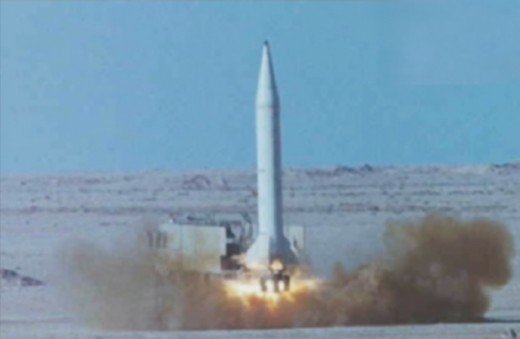
Project Babylon
Although not technically a missile another program conducted by the Iraqi military was Project Babylon which intended to develop the “Supergun”. The design was based on those of Gerald Bull which was the result of Project HARP in the 1960's. The first supergun built was the Baby Babylon which had a bore of 350mm (close to 14 inches) and barrel length of about 170 feet, this version was a prototype. The Iraqis intended to build a gun with a bore 1,000mm with a range of 1,200km. Officially the gun was for launching space vehicles and satellites but could have easily been used as a weapon.
After the lead designer Bull was killed in 1990 and through an international crackdown on weapons parts the supergun project failed and was abandoned. After the Gulf War in '91 Iraq admitted to the project and agreed to allow UN inspectors to destroy the components. Iraq also developed long-range artillery rockets including the Ababil which was based on the Yugoslav M-87 and whose range extended up to 100km. Another was the Sajil based on Brazilian Astro II rockets and another was the FROG-7, also known as the Laith, which had a range of 90km and could be fitted with cluster-munition warheads.iv
ivW. Seth Carus and Joseph S. Bermudez, Jr., Iraq's Al-Husayn Missile Program, Jane's Intelligence Review, Vol. 2, No. 5, May 1, 1990.
Do you think Saddam would have used a nuclear weapon if he had obtained one?
The Missing WMD
Before the First Gulf War Iraq developed missile technology based on the original SCUD missile designs creating an entire ballistic missile industry. The missile most widely used during the First Gulf War was the Iraqi modified SCUD, the al-Hussein, having a range of 650km. As part of their missile program was an attempt to attain the ability to produce new Iraqi missiles by reverse-engineering the SCUD missile engines. Some reports indicate success at this projectv. One goal of the missile program was to produce a SCUD-variant with a range of 1200km. Before the war Iraq had imported around 250 Scud-type missiles and produced an unknown amount of missile engines and components.
During the Operation Desert Storm 148 American personnel were killed in action, of these 28 were killed by the Al-Hussein missile strikes in addition to the 93 coalition forces who were killed by these Al-Hussein missiles. After the war the UN Security Council resolution 687 allowed Iraq to develop and produce only short-range missiles with a range under 150km and under UN monitoring, all other missiles exceeding this range were banned and any remaining stockpiles and components had to be destroyed.
The greatest fear about Iraq's missile development was the fact that Iraq had designed and deployed both chemical and biological warheads for their missiles. At least 50 chemical and 25 biological warheads were manufacture prior to Operation Desert Storm. Only 30 of these warheads were verified as destroyed by the UNSCOM inspectors. Iraq having launched more ballistic missiles in combat than any other nation and having suffered numerous missile attacks during the Iran-Iraq war have the most combat experience with missiles than any other nation and, before Operation Desert Storm, had the most advanced missile programs of the entire Arab world.
vIraq's Weapons of Mass Destruction, The Assessment of the British Government.
Aftermath Of An Iraqi Missile Attack
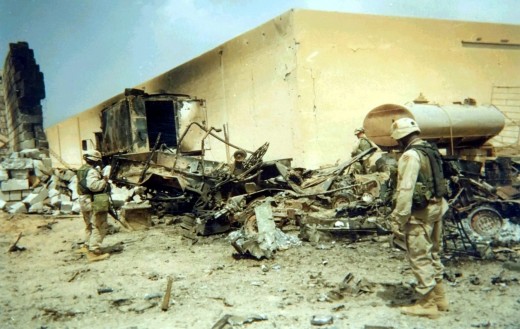
Iraqi Missiles
Missile
| Range
| Payload
|
|---|---|---|
Al-Samoud
| 180 km
| 280 kg
|
Scud-B
| 300 km
| 770 kg
|
Al-Hussein
| 644 km
| 500 kg
|
Al-Abbas
| 900 km
| 180 kg
|
© 2016 Lloyd Busch



